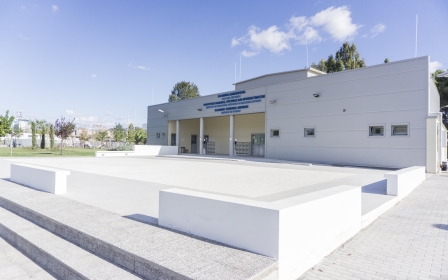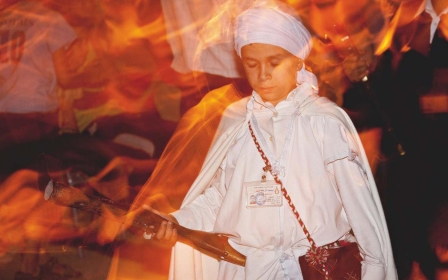
In pictures: The Great Mosque of Algiers

The Djamaa el Djazair mosque, also known as the Great Mosque of Algiers, is a vast, 377,000-square-metre complex with a prayer hall, a minaret and a courtyard, as well as an arcade with shops and services, a park extending over 14 hectares and an 'Islamic garden'. The complex is also the site of a cultural centre, a higher education institute for 300 doctoral students and a library with over a million books. Construction of the mosque began in the spring of 2012 (All pictures Farouk Batiche/MEE).

On 28 October 2020, a ceremony was held in the prayer hall for the celebration commemorating the birth of the Prophet Muhammad. A few hundred guests, mostly prominent national figures, attended the ceremony. The 22,000-square-metre hall is designed to accommodate 36,000 people, and the entire complex has a capacity of 120,000. The locally made rug features designs from each of the country’s 29 regions.
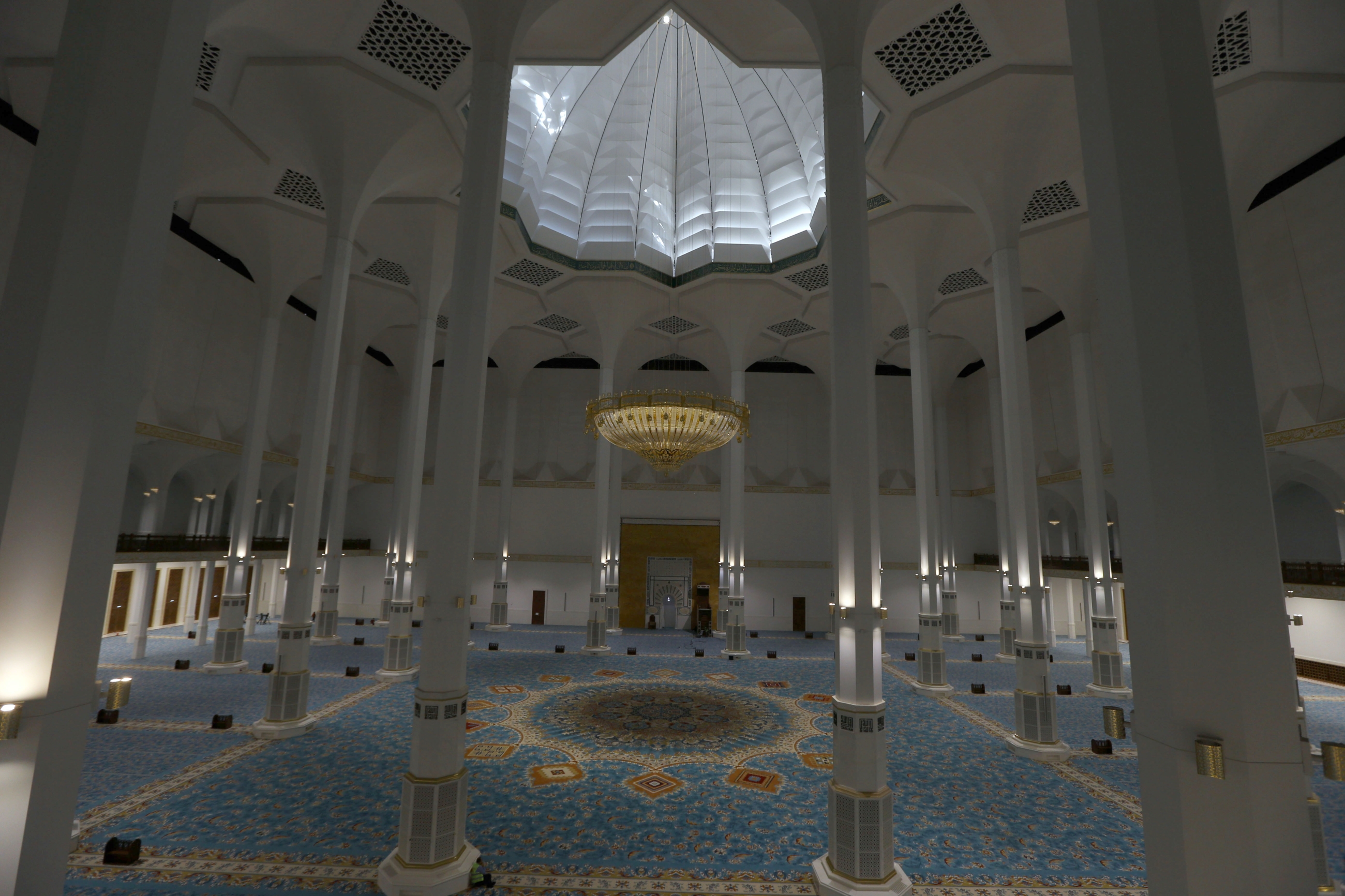
The mosque's prayer hall holds what is claimed to be the world’s largest chandelier. Weighing 9.7 tonnes and measuring 13.7 metres in diameter, the chandelier features 357,000 Swarovski crystals, which bathe the hall in dancing rays of light. Its 24-carat gold-plated frame is engraved with Islamic invocations. Scaffolding was put up to reach the dome and to secure 38 steel cables, from which the chandelier’s pre-mounted parts were gradually suspended.
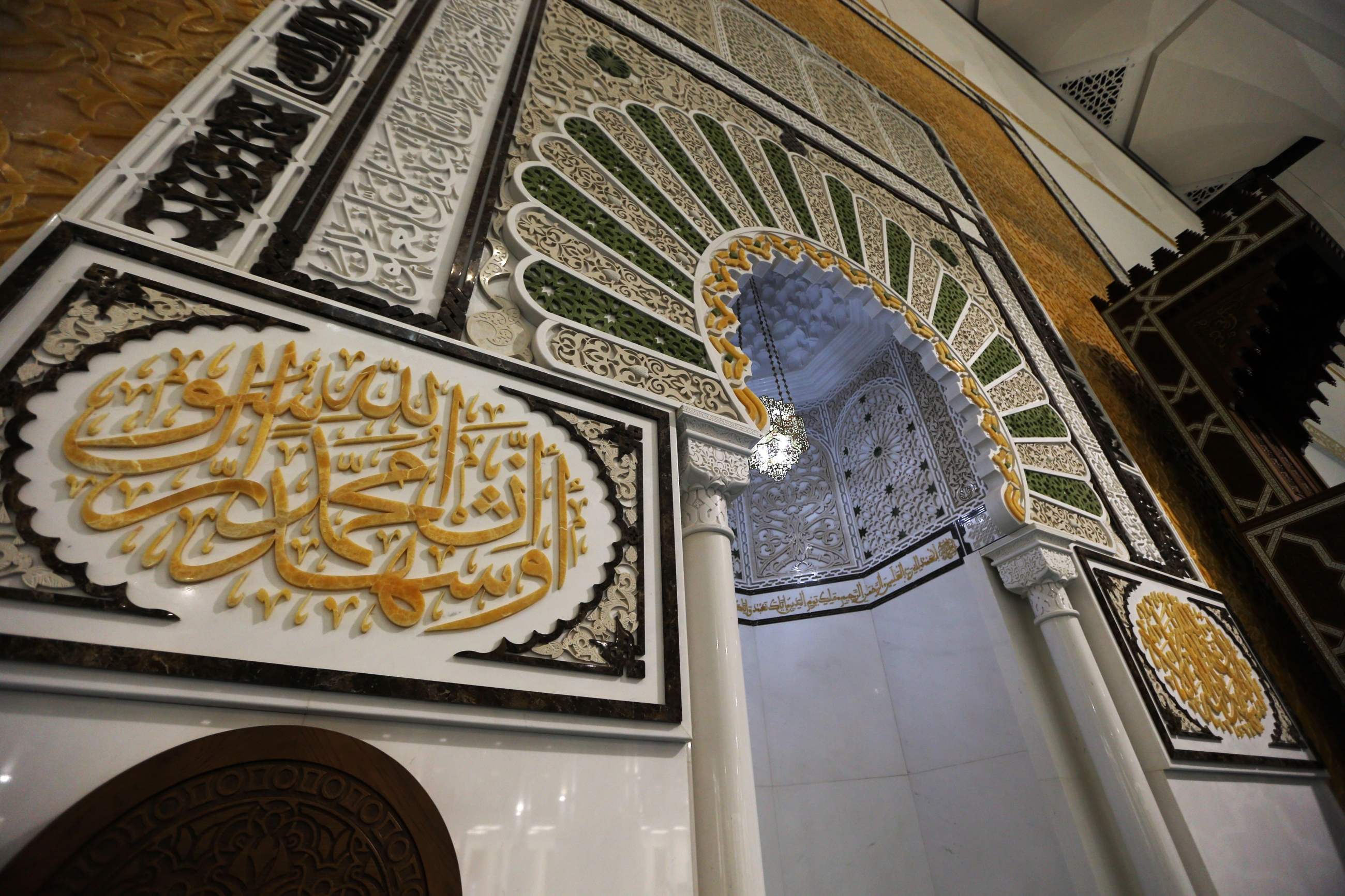
The marble mihrab, which indicates the direction of Mecca, and the wooden minbar, the imam’s pulpit, were both designed taking inspiration from Algeria’s oldest mosques. The mihrab is framed by a translucent onyx surface onto which the 99 names of God are engraved.
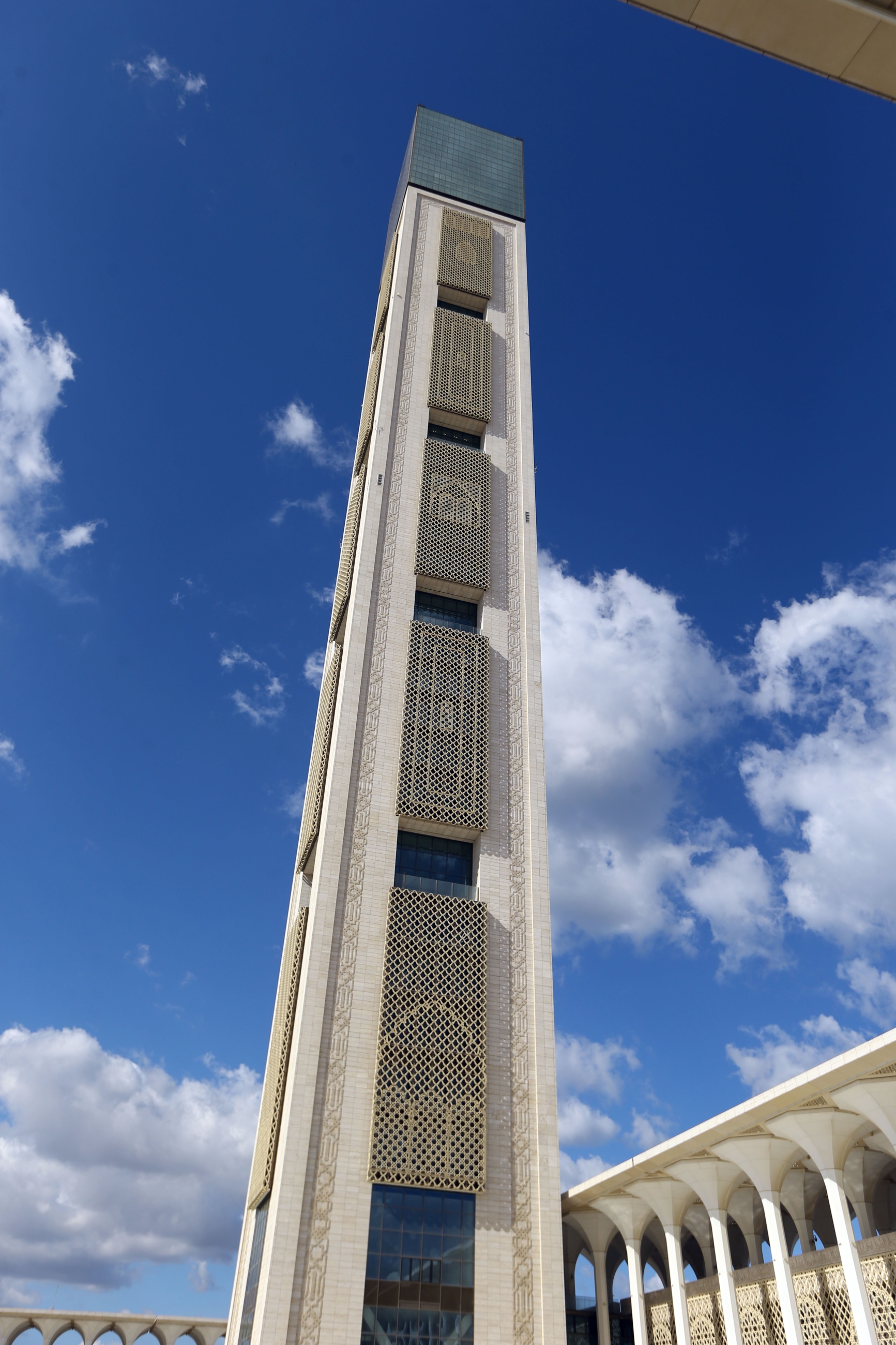
Standing at a height of 265 metres, the minaret of the Great Mosque of Algiers is the tallest in the world, overtaking the minaret of the Hassan II Mosque in Casablanca, Morocco, which is exactly 200 metres high. At its inauguration, the adhan (call to prayer) was broadcast from the minaret and could be heard up to three kilometres away. The pinnacle, or soumaah, is made of 1,200 glass panels, secured to a steel structure.

Designed in the traditional square-based style prevalent in the Maghreb, the minaret has 42 floors and 17 lifts. An observation deck on the 38th floor is equipped with telescopes, giving visitors a 360-degree-view of the city. Fifteen floors are reserved for a future museum of Islamic history and art, and eight for a higher-learning institute.
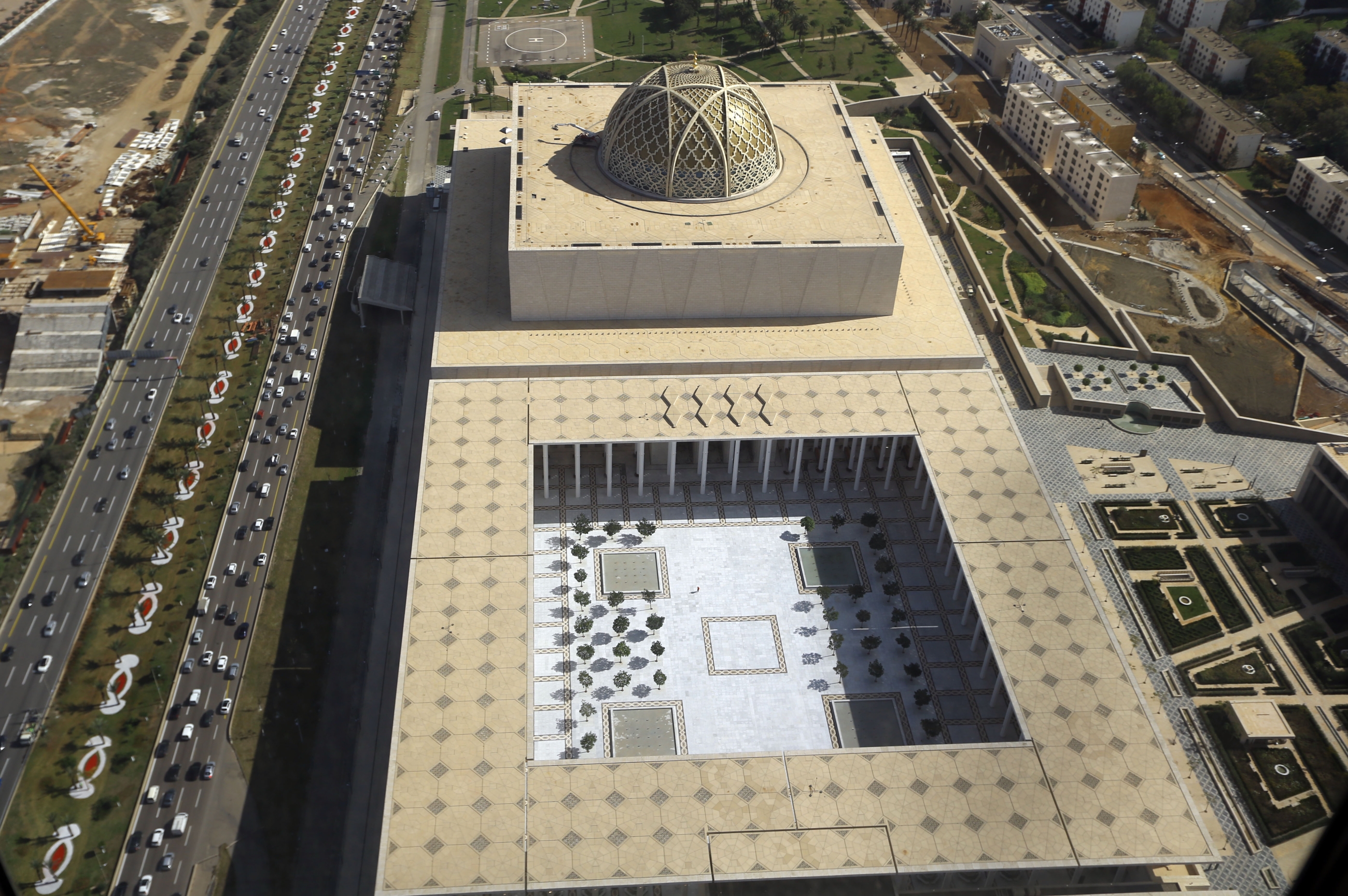
A courtyard with four fountains and 44 rubber trees is entered through the Bab al-Fatah gate. An underground water tank can collect 6,500 cubic metres of rainwater for irrigation purposes. In this picture, we can also see the exterior of the 76-metre-high dome.
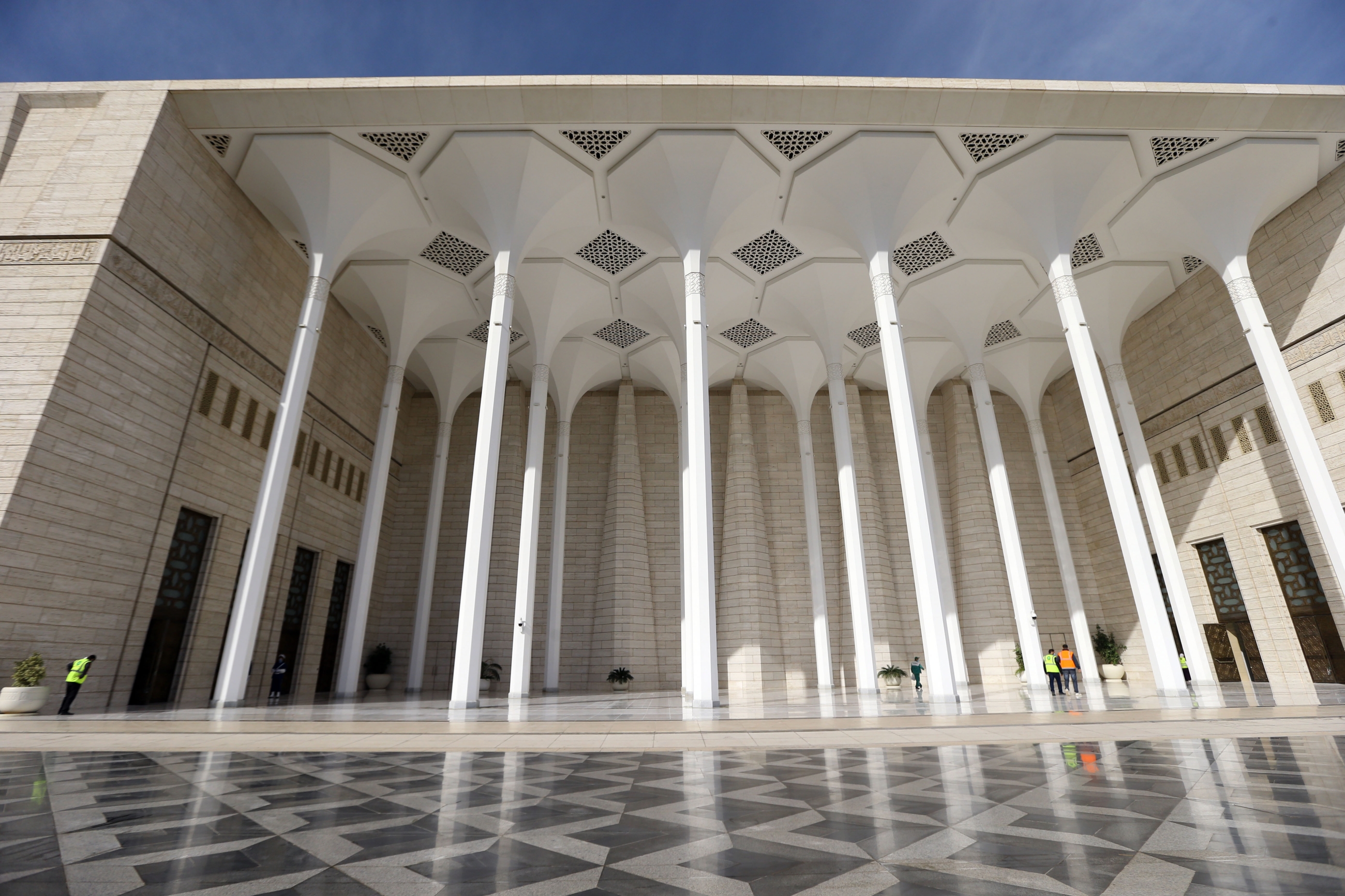
Employees prepare for the ceremony by the VIP entrance. The marble floor tiles and travertine wall cladding shown here can be found throughout the entire complex. The grounds opposite the VIP entrance feature flowerbeds, a crescent-shaped ornamental pond and a heliport. The door on the right leads to the imam’s apartments, where he may receive guests and delegations, or may choose to work in the library on the first floor.

The entrance on the left is reserved for official visits. The walls here are decorated with colourful tiles made by Algerian artists, most of which are based on surahs, or chapters, from the Quran. Some took up to six months to complete.

The mosque’s interior design, including seven kilometres of calligraphic inscriptions, is inspired by the Islamic visual traditions of the Maghreb. Decorations include rosettes, stylised flowers and traditional motifs known as kaim naim, the alternating vertical and horizontal rectangles full of moucharaby patterns, pictured here in the top half of the door.

The arcade contains space for shops and services, including cafes, restaurants and stores selling local artisan goods. It also includes an infirmary, a post office and a childcare centre, together with screening and conference rooms. An underground garage can accommodate 4,000 vehicles.
This article is available in French on Middle East Eye French edition.
Middle East Eye delivers independent and unrivalled coverage and analysis of the Middle East, North Africa and beyond. To learn more about republishing this content and the associated fees, please fill out this form. More about MEE can be found here.


